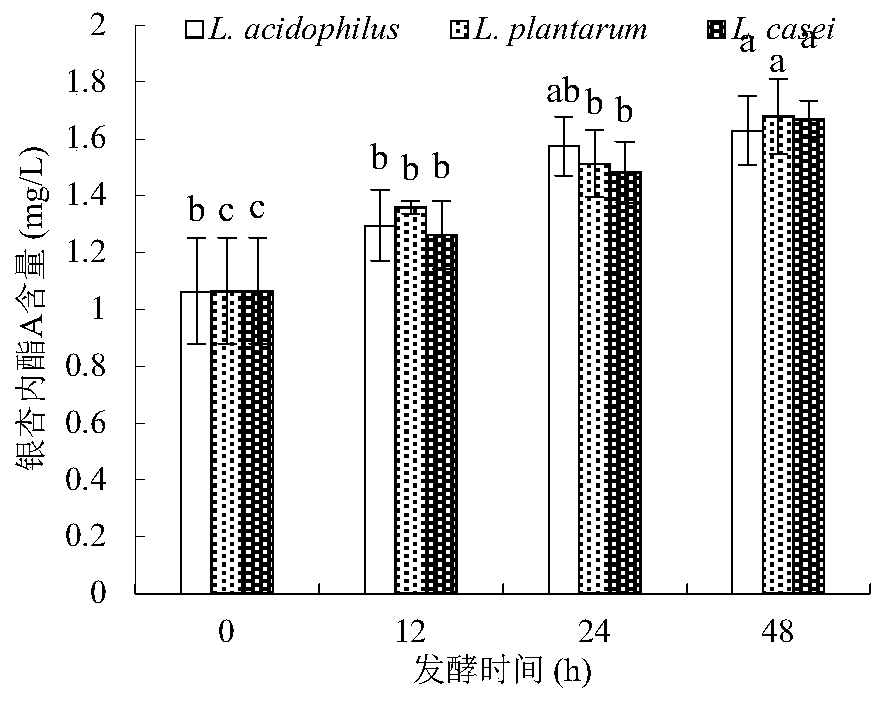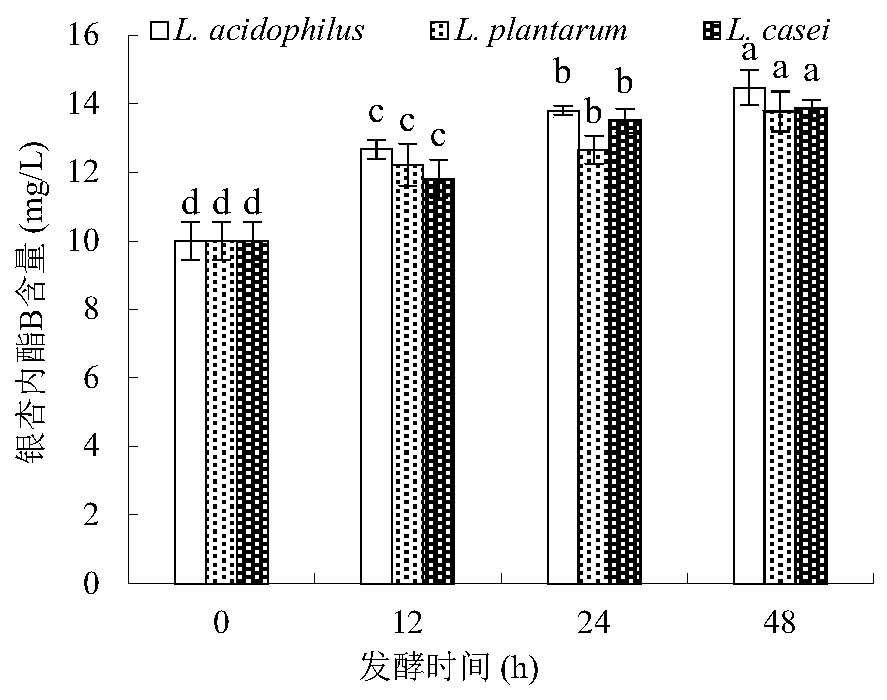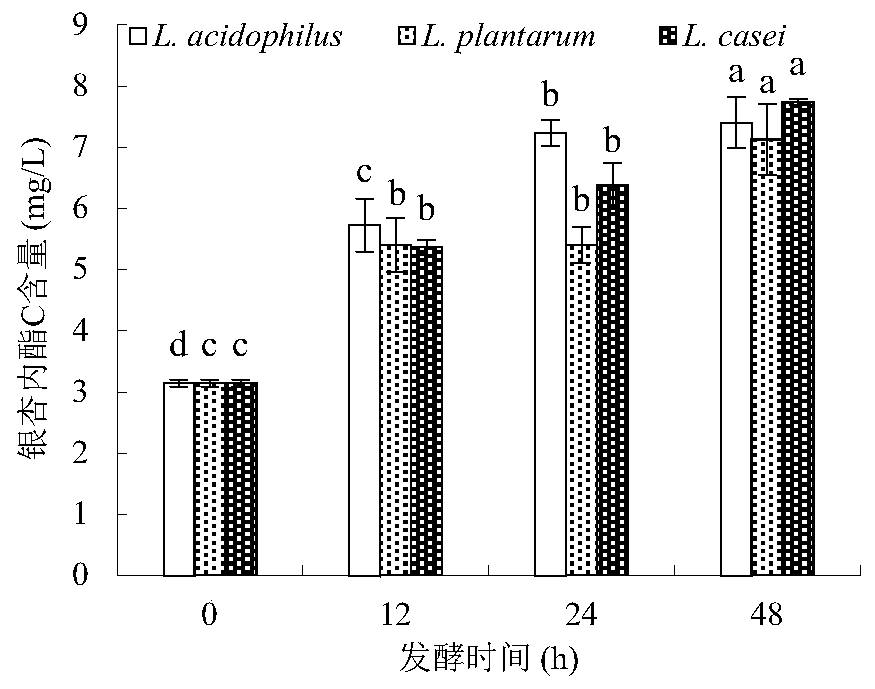Method for enriching ginkgolide in ginkgo fruit juice based on probiotic fermentation
A technology of white fruit juice and probiotics, applied in the direction of microorganism-based methods, biochemical equipment and methods, fermentation, etc., to achieve the effect of being conducive to industrial production and promotion, and low cost
- Summary
- Abstract
- Description
- Claims
- Application Information
AI Technical Summary
Problems solved by technology
Method used
Image
Examples
Embodiment 1
[0030] Embodiment 1: Extraction and determination of ginkgolides
[0031] Extraction of ginkgolides from fermented white juice: 50 mL of fermentation supernatant was concentrated to 5 mL by vacuum concentration under reduced pressure; then mixed with an equal volume of methanol, ultrasonically extracted (40 kHz, 250 W) for 30 min, and centrifuged Collect the supernatant. After removing the methanol in the supernatant, add ethyl acetate for extraction three times, 10 mL each time; combine the organic phases, concentrate to dryness with a rotary evaporator, dissolve the residue in methanol and dilute to 1 mL, filter through a 0.45 μm organic After membrane filtration, it was determined by HPLC-ELSD.
[0032] Preparation of control solution: take 50 mL of unfermented white juice, and extract ginkgolides according to the above steps.
[0033] HPLC-ELSD detection conditions for ginkgolides: Krosmail 100-C18 column (250×4.6mm, 5 μm) is used as the chromatographic column; the mobil...
Embodiment 2
[0035] A method for enriching ginkgolides in white fruit juice based on probiotic fermentation, comprising the steps of:
[0036] (1) Select fresh and full-grained ginkgo, remove the shell and seed coat, mix and beat according to the ratio of mass:volume 1:4, and add 15 U / g and 20 U / g (both based on the mass of ginkgo) to the slurry α-amylase and glucoamylase, stirred at 55 ℃ for 2.5 h, then centrifuged at 4500 r / min for 15 min to obtain white juice;
[0037] (2) Place the white juice in a water bath at 100 °C for 15 minutes to sterilize, after cooling, insert 3% of the white juice mass into the seed solution of Lactobacillus acidophilus BNCC 185342, and ferment at 37 °C for 48 h; the fermented white juice is centrifuged to remove bacteria After in vivo, the content of ginkgolides was determined.
[0038] Experimental results: if Figure 1-3 As shown, after 48 h of fermentation with Lactobacillus acidophilus BNCC 185342, ginkgolide A in white juice increased from 1.06±0.19 m...
Embodiment 3
[0040] A method for enriching ginkgolides in white fruit juice based on probiotic fermentation, comprising the steps of:
[0041] (1) Select fresh and full-grained ginkgo, remove the shell and seed coat, mix and beat according to the ratio of mass:volume 1:5, and add 20 U / g and 30 U / g (both based on the mass of ginkgo) to the slurry α-amylase and glucoamylase, stirred at 60 °C for 2 h, centrifuged at 4000 r / min for 20 min, and white juice was obtained;
[0042] (2) Sterilize the white juice in a water bath at 90°C for 20 minutes, add 1% of the weight of the white juice to the seed liquid of Lactobacillus plantarum BNCC 337796 after cooling, and ferment at 37°C for 48 hours; the fermented white juice is centrifuged to remove bacteria After that, the content of ginkgolides was determined.
[0043] Experimental results: if Figure 1-3 As shown, after 48 h of fermentation with Lactobacillus plantarum BNCC 337796, ginkgolide A in white juice increased from 1.06±0.19 mg / L to 1.68±0....
PUM
 Login to View More
Login to View More Abstract
Description
Claims
Application Information
 Login to View More
Login to View More - R&D
- Intellectual Property
- Life Sciences
- Materials
- Tech Scout
- Unparalleled Data Quality
- Higher Quality Content
- 60% Fewer Hallucinations
Browse by: Latest US Patents, China's latest patents, Technical Efficacy Thesaurus, Application Domain, Technology Topic, Popular Technical Reports.
© 2025 PatSnap. All rights reserved.Legal|Privacy policy|Modern Slavery Act Transparency Statement|Sitemap|About US| Contact US: help@patsnap.com



